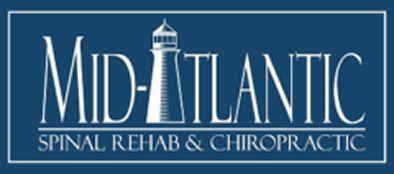Determination of Causation of Intervertebral Disc Injuries Following Baltimore Auto Accidents
As a Baltimore Chiropractor that routinely treats patients involved in Baltimore auto accidents, I am often called upon to determine causation of injuries. That is, I need to determine do a reasonable degree of medical probability whether or not a patient’s symptoms are causally related to a Baltimore auto accident. In the state of Maryland, the threshold of certainty is 51%. In other words, based upon the patients history, physical examination and objective evaluations (x-ray, MRI, etc), I have to be 51-100% sure that the patient’s complaints (whiplash, headaches, neck pain, back pain, etc) are causally related to the Baltimore auto accident. Clinically I am not concerned about causation, as it is my duty to treat a patient’s symptoms. However, medico-legally the determination of causation is extremely important when assigning fault or financial culpability for an injury.
The issue of clinical causation comes up a lot in my clinical practice. Typically an injured patient claims that part or all of their complaints are causally related to their Baltimore auto accident while the adverse (at-fault) insurance company claims that my patient is either not injured or that their injuries predated the Baltimore auto accident.
Fortunately a well respected researcher, Michael Freeman PhD, combed the literature to determine the appropriate systematic guidelines to make such a determination. A link to his study can be found here.
Mr. Freeman determined that for a clinician to draw causality three criteria must be met:
1. Biological plausibility– There must be a possible link between an injury and a Baltimore auto accident. A Baltimore auto accident could plausibly cause an injury to the spine including the intervertebral discs, but it is not likely that it can cause cancer.
2. Temporal relationship– The outcome (injury) can not pre-date the auto accident (with the exception of pre-existing degenerated non-symptomatic disc injuries which are beyond the scope of this blog post) AND the outcome can not unreasonably post date the auto accident (It is not plausible to relate neck pain 6 months after an auto accident if it did not show up sooner).
3. A lack of a more likely or probable alternative explanation for the symptoms– A patient who is obese but has no signs of prior back pain can not have their obesity blamed for their back pain if the pain first presents following a Baltimore auto accident.
Mr. Freeman concludes that “when using these guidelines in a narrative report setting, the clinician can write that the essential causal elements of biologic plausibility, temporality, and lack of likely alternative explanation have been met for a give case…and that a particular symptomatic disk injury resulted from a particular motor vehicle crash, as a reasonable medical probability.”
Disk injuries are very common injuries following Baltimore auto accidents. It is imperative that any provider understand how to appropriately diagnose and causally relate these injuries, as it affects the ability to properly treat these injuries and bring about symptomatic relief for patients.
If you, or anyone you know was involved in a Baltimore auto accident and have suffered from intervertebral disc injuries, please contact Mid-Atlantic Spinal Rehab & Chiropractic at (443) 842-5500. We would be glad to help!
Dr. Gulitz
